Kill innovative, SAFE, scheduled charter service or protect labor and incumbents from competition?
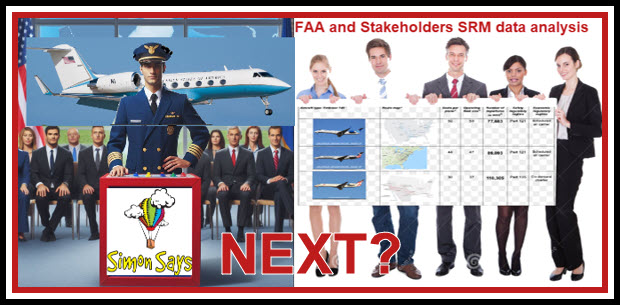
The FAA recently announced, not in an NPRM or ANPRM, but in an announcement that it “plans to take two actions to address PUBLIC CHARTER FLIGHTS, … Some services appear to operate like scheduled airlines but under less-rigorous safety regulations.” With what at best could be called QUALITATIVE comments, the Administratorhas commissioned his staff to begin (continue?) “working on some new set of rules that the scheduled charter operators “SHOULD FOLLOW THE SAME STRINGENT rules as scheduled airlines.”
Later in his carefully scripted press release, the Honorable Mr. Whitaker mentioned he “will convene a SAFETY RISK MANAGEMENT PANEL (SRMP) to assess the feasibility of a new operating authority for scheduled part 135 operations in 10-30 seat aircraft. The panel will dig into the data as we work to address the risks that exist today as well as think about the future of the national airspace system.” The SRMP’s first instruction is to design new requirements and then are to examine the data to assess the relevant risk to be managed. The sentence structure certainly implies that the head of the FAA ALREADY KNOWS that these operations pose a risk—just what are the dimensions of that exposure.
In 1978, a virtually unanimous Congress (yes, there was such a time) deregulated commercial air transportation from economic regulation. What remained was the FAA’s jurisdiction over SAFETY and that organization’s actions and policies have been confined to that SINGULAR FOCUS. Significantly, THE AGENCY HAS DEVELOPED AND STRICTLY ADHERED TO A DATA-DRIVEN ANALYTICAL DISCIPLINE. The June 11th announcement appears to be less driven by the numbers.
First, the statement of the Administrator is reproduced verbatim.
Second, NBAA issued a strongly worded statement raising the basis of this NPRM disguised as a mere pronouncement. The association’s comments take the FAA to task for the lack oy analysis. The organization’s members have unequalled experience as Part 135 operators, as Part 91 flight organizations and as buyers of the services at issue. The FAA’s own Order 8040.4B recommends that the SRMP should put such experts are needed to examine the “scope and complexity” of such a regulatory review!!!
The THIRD portion of this post is a lengthy and well researched critique of this Biden Administration’s “attack” on the emerging Scheduled Charter business. The author lauds this new business as providing much needed service to underserved communities
The paper, see the article’s headline, points to “ex parte” lobbying as the real impetus for this odd action. The accusation that the pilots and some airlines can play SIMON SAYS with the DOT/FAA. Through several pages, he traces why the lobbyists are using safety regulation to deter/eliminate competition from this new service. The Airline Deregulation Act is cited as a legal prohibition to block these flights.
History is a useful tool in discerning how safety can be maintained while consumer benefits are permitted. The lesson, with 25 years of SAFETY HISTORY, is that loopholes are not inherently evil. Back when the Secretary was 4, a wise Associate Administrator of Aviation Safety received multiple missives from the field. The Investigators on their daily ramp checks noted that on successive days, different owners of the same airplane boarded that vehicle. “HOW CAN MORE THAN A FEW PEOPLE OWN A SINGLE PLANE?” A check of the FAA aircraft registry showed that it had become fairly commonplace for many names to be listed on one title. “OH MY GOSH, THAT’S COMMERCIAL SERVICE FLYING UNDER PART 91.” Here is the regulatory history that is in the introduction to AC 91-84:
The fractional ownership concept began in 1986 with the creation of an industry program that offered increased flexibility in aircraft ownership and operation. At that time this program used existing aircraft acquisition concepts, including shared aircraft ownership, and provided for the management of the aircraft by an aircraft management company. The aircraft owners that participated in the program purchased a minimum share of an aircraft, shared that specific aircraft with others having an ownership interest in that aircraft, and participated in an aircraft exchange program with other owners in the program.
During the 1990s this growth was substantial and sustained. While growth in new fractional ownership programs is minimal, the FAA expects existing programs to continue increasing in size. c. As fractional ownership programs grew in size, complexity, and number, there was considerable controversy within the aviation community as to their appropriate regulatory structure.
Additionally, the FAA had GROWING CONCERNS regarding issues of ACCOUNTABILITY, OPERATIONAL CONTROL, AND REGULATORY COMPLIANCE. The debate centered on whether these operations were private or commercial. In October 1999, the FAA convened a special aviation rulemaking committee, the Fractional Ownership Aviation Rulemaking Committee (FOARC), to address the issues surrounding the regulation of fractional ownership program operations.
Good data, open mind and Solomonic judgment. No limiting restrictions and now the fractional aircraft ownership industry is large, successful and SAFE.
Whither next: SIMON SAYS or a real SRMP analysis. Denying consumers of convenient air service by using “SAFETY” as excuse or confirming your populist credentials by following the record of fractional ownership?
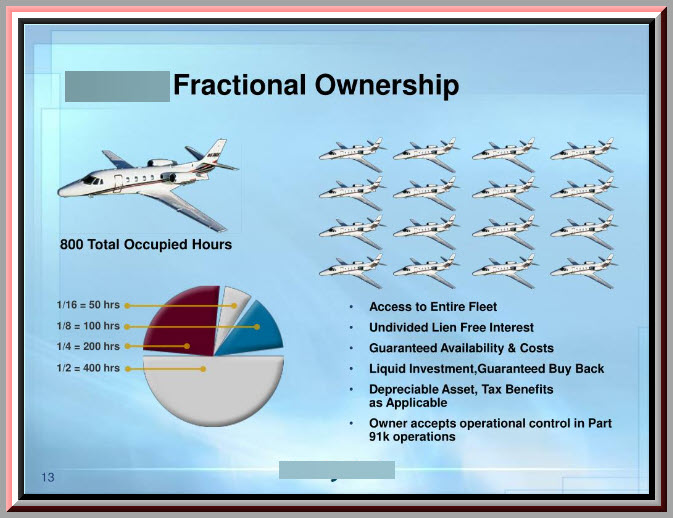
______________________________________________________________________
FAA Ensuring Safe Public Charter Flights, Exploring Future Solutions for All Flyers
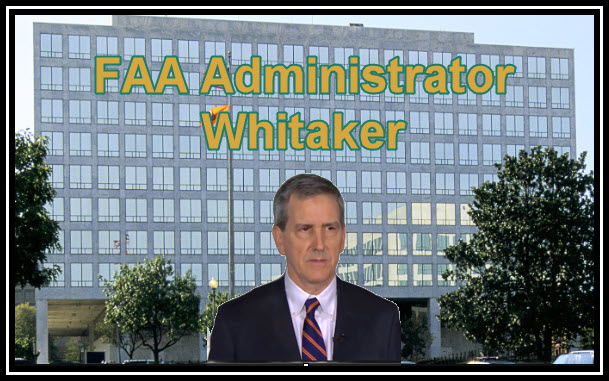
Monday, June 17, 2024
WASHINGTON – The Federal Aviation Administration (FAA) is announcing today plans to take two actions to address PUBLIC CHARTER FLIGHTS, which have rapidly expanded in frequency and complexity in recent years. Some services appear to operate like scheduled airlines but under less-rigorous safety regulations – a fact that oftentimes is not transparent to the flying public. The FAA will explore new ways to integrate charter flights into the airspace in a manner that provides flexibility and safe options for all flyers.
First, as previously announced in a request for comments, the FAA intends to initiate a rulemaking to amend part 110 definitions of “scheduled,” “on demand,” and “supplemental” operations. If finalized, the effect of this proposed rule change would be that public charters will be subject to operating rules based on the same safety parameters as other non-public charter operations.
“Part of the safety mission of the FAA is IDENTIFYING RISK EARLY ON, and that’s exactly what we’re doing on public charters as usage expands. If a company is effectively operating as a scheduled airline, the FAA needs to determine whether those operations SHOULD FOLLOW THE SAME STRINGENT rules as scheduled airlines,” said FAA Administrator Mike Whitaker.
The FAA intends to issue the notice of proposed rulemaking expeditiously. As part of any proposed rule, FAA would seek comment on an effective date that would allow for industry to adapt to any change in the regulatory environment. FAA’s plans follow an initial request for comment on the issue in August 2023, in which the agency received and evaluated approximately 60,000 public comments.
Additionally, because of our dedication to expanding AIR SERVICE TO SMALL AND RURAL COMMUNITIES, we will explore opportunities to align aircraft size and certification standards with operational needs for small community and rural air service. Specifically, the FAA will convene a SAFETY RISK MANAGEMENT PANEL (SRMP) to assess the feasibility of a new operating authority for scheduled part 135 operations in 10-30 seat aircraft. The panel will dig into the data as we work to address the risks that exist today as well as think about the future of the national airspace system.
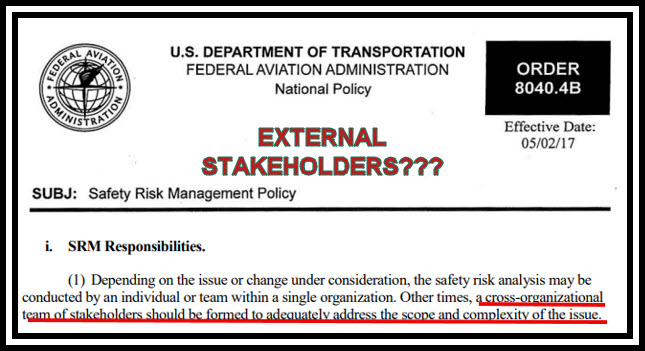
Whitaker added, “At the same time, we want to look at how future innovation might cause us to think differently. Safe air travel options should be available to everyone, not limited to only those living near a major airport. We want to put a SAFETY LENS over the options of FUTURE INNOVATION, as we work to further connect small and rural communities to open up more options for everyone at the same high level of safety.”
The FAA’s public charter work is being done in coordination with the Transportation Security Administration (TSA). While the FAA focuses on the safety of the flying public, TSA focuses on the security of transportation systems. The TSA has been reviewing the security requirements of certain operators under the Twelve-Five Standard Security Program (TFSSP), which includes a proposal for the screening of passengers and their accessible property on public charter flights along with other requirements for all TFSSP operators. In accordance with 49 CFR 1544, TSA provided a 45-day comment period for the impacted operators that ends on June 27. TSA will work closely with the impacted operators. TSA will consider all of the feedback prior to issuing the changes in final.

++++++++++++++++++++++++++++
NBAA Questions FAA’s Plan for New Rules on Flights Critical to Communities

Contact: Dan Hubbard, 202-431-5970, dhubbard@nbaa.org
Washington, DC, June 18, 2024 – The NATIONAL BUSINESS AVIATION ASSOCIATION (NBAA) is questioning the rationale for a government plan to develop far-reaching NEW REGULATIONS, on alleged safety grounds, for certain ON-DEMAND PUBLIC CHARTER CARRIERS that are often key to aviation service in small communities.
The plan, announced yesterday by Federal Aviation Administration (FAA) officials, applies to public charter operators regulated under FAA Part 135 safety rules and Department of Transportation Part 380 economic requirements.
“Safety is the top priority for business aviation, and our sector has an impeccable record of leadership in working with government agencies and other stakeholders in the development of regulations that address safety concerns and put operational needs first. The FAA’s announcement suggests an INTENTION TO SIDESTEP BOTH CONSIDERATIONS,” said NBAA President and CEO Ed Bolen.
“Specifically, the plan to impose new requirements on these carriers has been introduced without an apparent data-based safety rationale. Additionally, the FAA’s approach to developing the requirements has the potential to relegate to the sidelines the citizens in small communities and other important voices most impacted by this process.
“We call upon the FAA to step forward with a data-driven basis that explains the need for this change, and detail its intended process for engaging with all voices in a meaningful dialogue about the agency’s approach to public charter policy.”
# ####### #
by Gary Leff on June 17, 2024
Last summer, the FAA outlined an intention to ban JSX and other scheduled public charter operators, largely because they offer a popular, quality product that competitors do not like.
Now the FAA says that it will move forward with a NOTICE OF PROPOSED RULEMAKING that would – at least in some cases – prevent public charter operators from selling scheduled flights from private terminals, USING CO-PILOTS WITH FEWER THAN 1,500 FLYING HOURS.
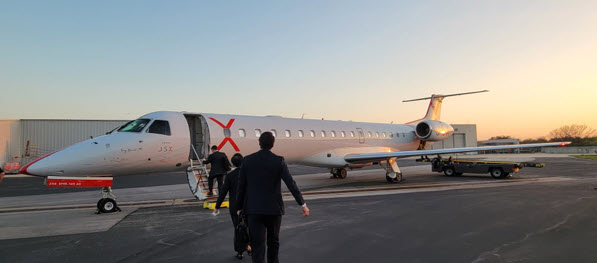
Specifically, they plan to change their definitions of “scheduled,” “on demand,” and “supplemental” operations that allow flights with fewer than 30 seats to fly under part 135 rules instead of part 121 rules that apply to major airlines.
It’s not yet clear what this rulemaking will look like.
- The actual text of what the FAA proposes will be released later this year, soliciting the legally-required comments, with an aim towards issuing a final rule next year.
- The FAA says they’ll PLAN FOR A TRANSITION PERIOD OF “SEVERAL YEARS” for existing carriers to comply with new rules.
- And they plan for a Safety Risk Management Panel that would consider conditions for continued operations under part 135. THIS WILL SPECIFICALLY CONSIDER THE USE OF OF HYBRID ELECTRIC PLANES AND THEIR USE IN RURAL COMMUNITIES.
Indeed, based on a statement from a spokesperson for JSX, they seem to think they can work within the framework that the FAA is planning.
JSX supports the Federal Aviation Administration’s efforts to maintain the safety of civil aviation and applauds FAA Administrator Whitaker’s plans to evaluate a new operating authority for certain Part 135 operations.
More than half of JSX’s public charter markets operate in airports that are not served by large network airlines, yet there are thousands more airports – funded by the American taxpayer – that remain inaccessible to the vast majority of Americans unless they have the means to afford private jets.
As the COUNTRY’S LARGEST PUBLIC CHARTER AIR CARRIER, JSX has modeled the way forward for safe, secure, and reliable regional operations under Part 135 since inception and, with intent to take delivery of up to 332 hybrid-electric airplanes from 2028, aligns with the Biden Administration’s call to encourage competition and innovation in air travel.
We eagerly look forward to collaborating with our regulators to cement the importance of public charters and expand access to vital air connectivity in the future.
Timing Makes The Outcome Of This Effort Uncertain
The FAA says they’re planning for a Notice of Proposed Rulemaking by the end of the year, and hope to finalize a rule in 2025 (often these timelines slip, so any final rule might come in 2026).
Different people could be in charge at the Department of Transportation next year. Just like the Biden Administration promised a Department of Transportation rule requiring airlines to pay cash compensation for delays but did not actually propose a rule in time to get it done during a first time, this effort too could be sidetracked by the upcoming Presidential election.
FAA Crackdown Is Legally Dubious
49 USC 41104 limits FAA’s authority to issue regulations on public air charters. It states,
The Secretary of Transportation may prescribe a regulation or issue an order restricting the marketability, flexibility, accessibility, or variety of charter air transportation provided under a certificate issued under section 41102 of this title ONLY TO THE EXTENT REQUIRED BY THE PUBLIC INTEREST. A regulation prescribed or order issued under this subsection may not be more restrictive than a regulation related to charter air transportation that was in effect on October 1, 1978.
Since these proposed regulations would limit the “marketability, flexibility, accessibility or variety of charter air transportation” in a manner that is more restrictive than regulation on charter transportation on October 1, 1978, the FAA seems to be prohibited from issuing this regulation. Congress created the law which led to current regulations under which JSX operates, and the FAA in doing incumbent interests’ dirty work would be acting against current law.
It will be interesting to see how the FAA’s Notice of Proposed Rulemaking deals with this, as well as President Biden’s Executive Orders requiring consultations with the two dozen Native American tribes that would potentially have air service limited by stricter regulation of scheduled charters, as well as how they handle the processes for rules with significant economic impact (annual revenue of JSX alone is larger than the required threshold).
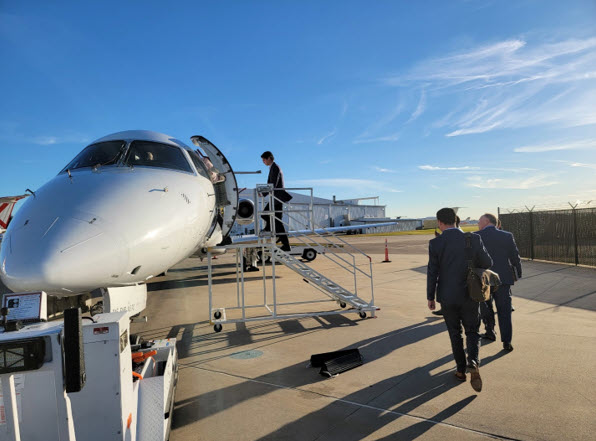
THERE’S NO VALID ISSUE TO ADDRESS
There’s no basis for a concern about relative safety in part 135 operations. Scheduled charters have just as strong a safety record as part 121 airlines, especially when focusing on operations like JSX’s. THE 1,500 HOUR RULE DOESN’T ADD TO SAFETY. IN FACT, IT ALLOWS FOR HOURS TO BE RACKED UP NOT JUST IN CLEAR AIR TOUCH AND GO TAKEOFFS AND LANDINGS (NOTHING LIKE WHAT PILOTS FACE IN COMMERCIAL OPERATIONS) IT ALLOWS HOURS TO BE ACCUMULATED IN A HOT AIR BALLOON. The balloon can even be tethered. Meanwhile experience shows that current part 135 rules are mission-appropriate for safe operations.
Critics say that JSX and others ‘exploit a loophole’ though without actual safety risk that is a good thing. Moreover it’s also not actually true in the traditional sense. There’s not a drafting mistake that the FAA hadn’t thought of that’s being exploited. In fact, the FAA specifically linked part 380 and part 135 operations to allow the sale of scheduled charters the way that JSX offers.

Why The FAA Is Going After Scheduled Charters
The federal government – both at the FAA and Transportation Security Administration – had been comfortable with JSX and other public charter operations for years. Then two things happened.
- SkyWest wanted to operate as a public charter on Essential Air Service routes in order to broaden its pool of co-pilots. This set off alarm bells at pilot unions and triggered their outrage and lobbying.
- Big airlines saw the union push as an opportunity of their own to pile on and block an upstart competitor.
There’s been a admits [STET] their lobbying is about blocking what they view as unfair competition.
The one place where I do draw an issue with, where the rules aren’t the same. If you don’t have to deal with the same DOT provisions, the same FAA provisions, the same security TSA provisions that’s not fair….I’m quite certain that the FAA, the DOT, and TSA will take a look at what’s going on and make sure that no one is advantaged.
American Airlines, of course, partners with scheduled public charter operator CONTOUR and owns a stake in Gol whose co-pilots do not need 1,500 hours of flying.
It looks like lobbyists for American, Southwest and ALPA won a victory of some kind – though we do not know yet what the meat of the Notice of Proposed Rulemaking will look like, what a final rule will be, and how potential legal objections will shake out.
It’s possible that, in addition to a ‘transition period’, it will still be possible (though more cumbersome) for carriers to operate under part 135 and offer advantages of less encumbered and more comfortable air travel.
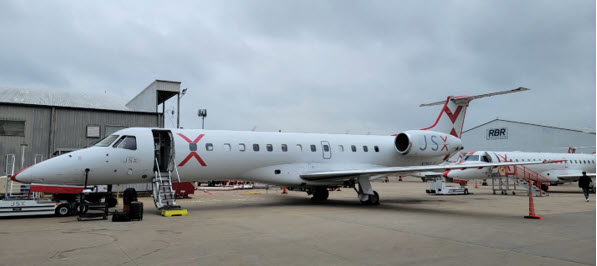
TSA Is Taking Its Own Crack At Attacking Scheduled Charters
This effort by the FAA is entirely separate from the process at TSA to block scheduled charter operations that former American Airlines CEO Doug Parker and Southwest Airlines COO Andrew Watterson personally lobbied the TSA Administrator for.
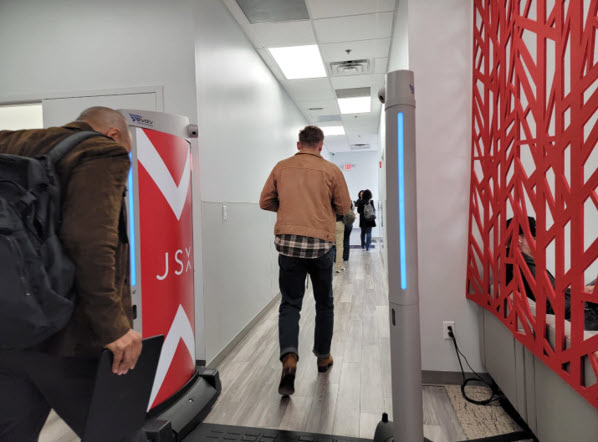
Since public charters with 30 or fewer seats can operate out of private terminals, going through fully TSA-approved screening but not TSA-staffed screening checkpoints adds to the ease of operations like JSX’s. JSX checks passenger IDs against targeting databases, swabs every bag, and passengers go through weapons detectors. And their planes make less valuable targets. This is a convenience that major carriers do not want them to have, even though flying from private terminals is something that American Airlines and Southwest both promote for their own charter businesses.
So even as we wait for the specifics on the lobbyist-inspired FAA crackdown, we await changes to the TSA’ s Twelve-Five Standard Security Program.
XXXXXXXXXXXXXXX